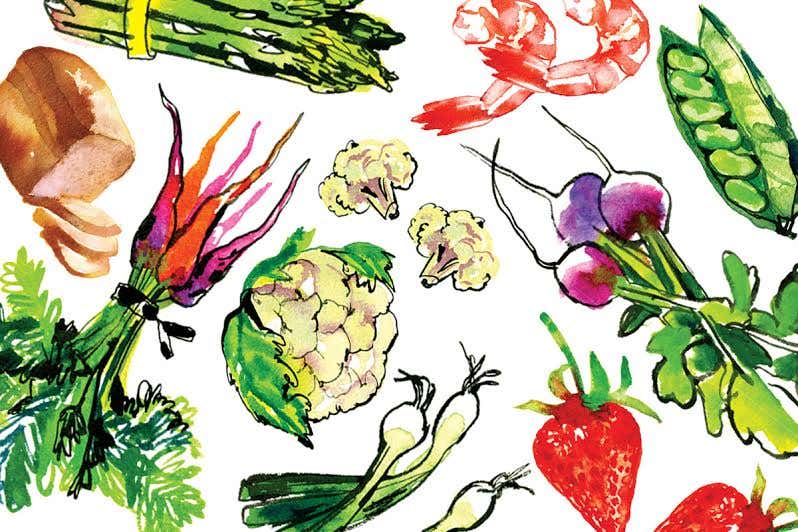
The Interview: John Truex, founder, Borough Furnace

We love the elegant cast-iron skillets from Borough Furnace, a small foundry established in Syracuse, New York, in 2011 by John Truex. We asked John to tell us more about the history of the project and how Borough Furnace skillets are made. —Karen Shimizu
Saveur: What's your background, and how did you come to start Borough Furnace?
John Truex: My background is in product design. For a few years, I worked at a furniture factory and at a small design studio, but my goal was always to be able to produce my own stuff rather than outsource. I was interested in creating a new production model for manufacture, and I had some experience with iron casting—I went to college for sculpture—so I knew the backyard version of it. What I had to learn was the production version of it. Most cast-iron manufacturing is very dirty; foundries generally use coke-powered furnaces, generating a lot of pollution, or induction furnaces, which use massive amounts of electricity. We came up with a system where we run the furnace on recycled cooking oil and make the pans from scrap metal, so the environmental impact is minimal.
S: How did you decide to make frying pans?
JT: Once we wanted to work with cast iron, the material led us to pans. A frying pan is a traditional expression of cast iron and provided a design challenge. Every cast-iron skillet we looked at was basically the same. All of them had a stubby handle that you couldn't really use because it would get so hot. So in our design, we made a long handle that counterbalances the pan so you can pick it up easier—and it stays cool when it's on the stovetop. Our pans are also a little thicker than most, which helps with heat retention.
S: How do you make your pans?
JT: Our pans are made out of recycled iron. Our starting material is any scrap iron that is clean and that I can break up with a sledge hammer: old steam radiators, bathtubs (those without coating), pieces of old cast-iron stoves, things like that. I have a big pile of those things already broken up into three- to four-inch-pieces. Each pan requires about 12 pounds to cast the pan and the runners that feed metal into the cavity. So I put 12 pounds into the crucible in the furnace to melt. Once the iron has melted, it's poured into a mold and cools overnight. Each skillet is then hand finished and seasoned several times with organic flaxseed oil before it is tagged with its individual production number and ready for sale.
S: Sounds like this is a full-time job!
JT: I teach at Syracuse University in the mornings and a few afternoons during the week. During that time, Adam, who works with me at the shop, is breaking up the molds poured from the day before, remixing the sand, and making new molds. In the afternoon or at night, I come in and fire the furnace up to 2600 degrees Fahrenheit and put the metal in the crucible to melt. The whole process, from cold furnace to having liquid metal ready to pour, takes two and a half hours. Once the iron is molten, I pour the molds—I can do one every 40 minutes or so. Right now I pour three to four every day.
S: Your skillets and braising pans are in extraordinarily high demand. What's next for you all?
JT: At present, we're hoping to increase production. Right now we sell out in 10 minutes every time we post new inventory. One of the limiting factors we're currently facing is our mold-making process; it's time consuming to make each mold by hand. We're working on some efficiencies that will retain the small scale of our production but allow us to get more skillets up for sale each week, and to introduce some new products in the coming year.
Keep Reading
Continue to Next Story










